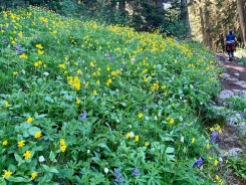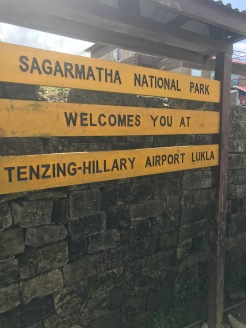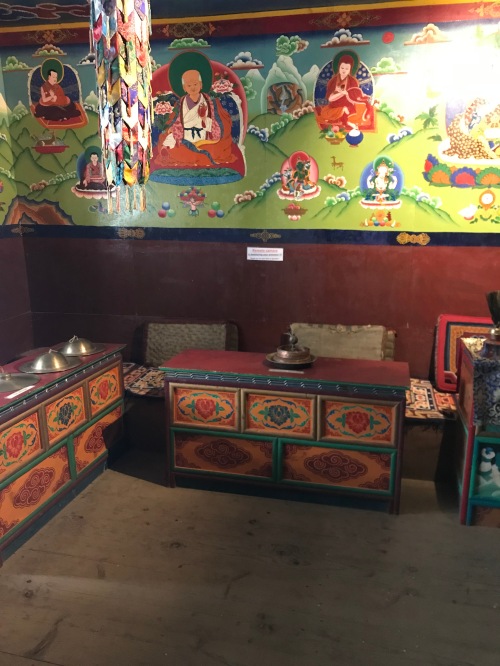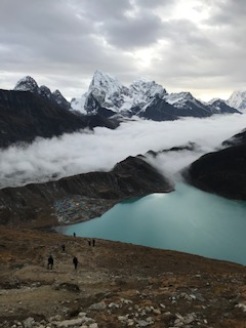I am an avid Hiker and living in the great northwest with its old-growth forests and in the shadow of some magnificent volcanoes is just pure magic. Here I am attempting to describe 2 of my most favorite hikes in this area.
Skyline Divide – Mt Baker
We have 2 amazing volcanoes – Mt Baker to the North and the more well known Mt Rainier to the south. This hike is set in the Mt Baker Wilderness which is part of the Mt baker national forest. Interestingly Mt baker is not a national park in its own right but Mt rainier is. Both areas are spectacular and Skyline Divide is one of the most picturesque hikes on Mt Baker.
To access this hike you have to drive towards the cute little town of Deming and then onward to Glacier and after passing the ranger station at Glacier you have to pick up forest road # 37 which goes part of the way along the Nooksack River. This road is rocky and also has some of the largest potholes I have ever seen. However, this road, bad as it is for your stomach saves you a bit of climbing as it switchbacks up to almost 4000feet to the start of the Skyline trailhead.
The trailhead begins in a classic old-growth northwest forest and starts climbing almost immediately, and is pretty relentless though bearable as the large forest of the hemlocks, and silver fir trees provide much-needed shade and a cool breeze on sweaty faces. The flies are usually out in the month of July and August so bug repellent is an absolute must. The trail itself gains 1500 Feet in 2 miles to reach the ridgeline. On the way, we cross a few mountain meadows of pretty aster, daisy, and lupine with purple, yellow, and white hues. Once on the first knoll on the ridgeline, the panoramic sight of Mt Shuksan, Mt Baker, and the High divide greet you and as you stand mesmerized at this panoramic picture postcard, you also have the open mountain meadows in full bloom. More lupine, glacier lilies, arnica and paintbrushes, and too many other flowers. If you are lucky as I once was you get to see some curious chipmunks and some grouse that seem to make a strange bassoon like sound. As you keep walking along the ridgeline and continue on to the second and third knolls you seem to get closer and closer to Mt Baker or Kulshan as the mountain is lovingly named by the local Lummi people. The 6th knoll stands at am impressive 6,563 feet of elevation. At this point, you can almost touch beautiful Kulshan. To the east are views of Shuksan, yellow aster butte, and the north cascade range in a distance.
I stop, stare, and breathe and take in the beauty of this magnificent place.
Blue Lake
There are many hikes of unparalleled beauty in the Pacific Northwest and Blue lake is definitely one of them. I have done it twice, once in the height of summer and once just at the beginning of the hiking season where there was a little bit of snow traversing as well. Both times the beauty of this hike is unparalleled. The best part of this hike is that anyone with any level of fitness can do it. It is a classic that should be on everyone’s list.
Located right off Highway 20 in the north cascades national park this hike is close to the Washington pass overlook scenic viewpoint while driving up to Winthrop so access is easy. Highway 20 itself has some of the more scenic views as it winds through the north cascades, among them being the more famous Diablo lake which is an amazing sight on a sunny day.
The hike starts off a nice parking lot on a nice boardwalk which leads into a tranquil forest. From the forest, you come into a meadow with cascading little waterfalls as you step briefly back into the forest after which you see magnificent views of Cutthroat peak and Whistler mountain on the northwestern side of highway 20.
As you keep climbing you will hear the slow trickle of a stream coming down from this magnificent lake. As you scramble over the last of the rocks and cross over a log the lake comes into view. In the fall you see hues of orange and pink reflected in the pristine water. Before the fall season as the pics show you, see parts of the lake are frozen and there are more white and green colors. Either way, this is a place to pause, reflect, and stop everything you are doing to just soak in the magnificence of Mother Nature and the many picture postcards she paints for us.


















 Here against a clear blue sky ( a view of the two peaks on a saddle) Everest on the Left and Lhotse on the left and a Ama Dablam peeking out on the right.
Here against a clear blue sky ( a view of the two peaks on a saddle) Everest on the Left and Lhotse on the left and a Ama Dablam peeking out on the right.





























 After some very tasty curry and rice with pickles and some great conversation with our hiking companions, an Australian couple, a couple of Americans and 2 Spanish people, we snuggled up in bed at around 8pm. It was hard to sleep with all the excitement of getting this far still we managed to get a short nap in before being woken up by the sound of voices and flashing lights, we realized that groups of hikers were going up to the summit already to beat the crowd coming in a bit later. We decided to exit too.
After some very tasty curry and rice with pickles and some great conversation with our hiking companions, an Australian couple, a couple of Americans and 2 Spanish people, we snuggled up in bed at around 8pm. It was hard to sleep with all the excitement of getting this far still we managed to get a short nap in before being woken up by the sound of voices and flashing lights, we realized that groups of hikers were going up to the summit already to beat the crowd coming in a bit later. We decided to exit too.